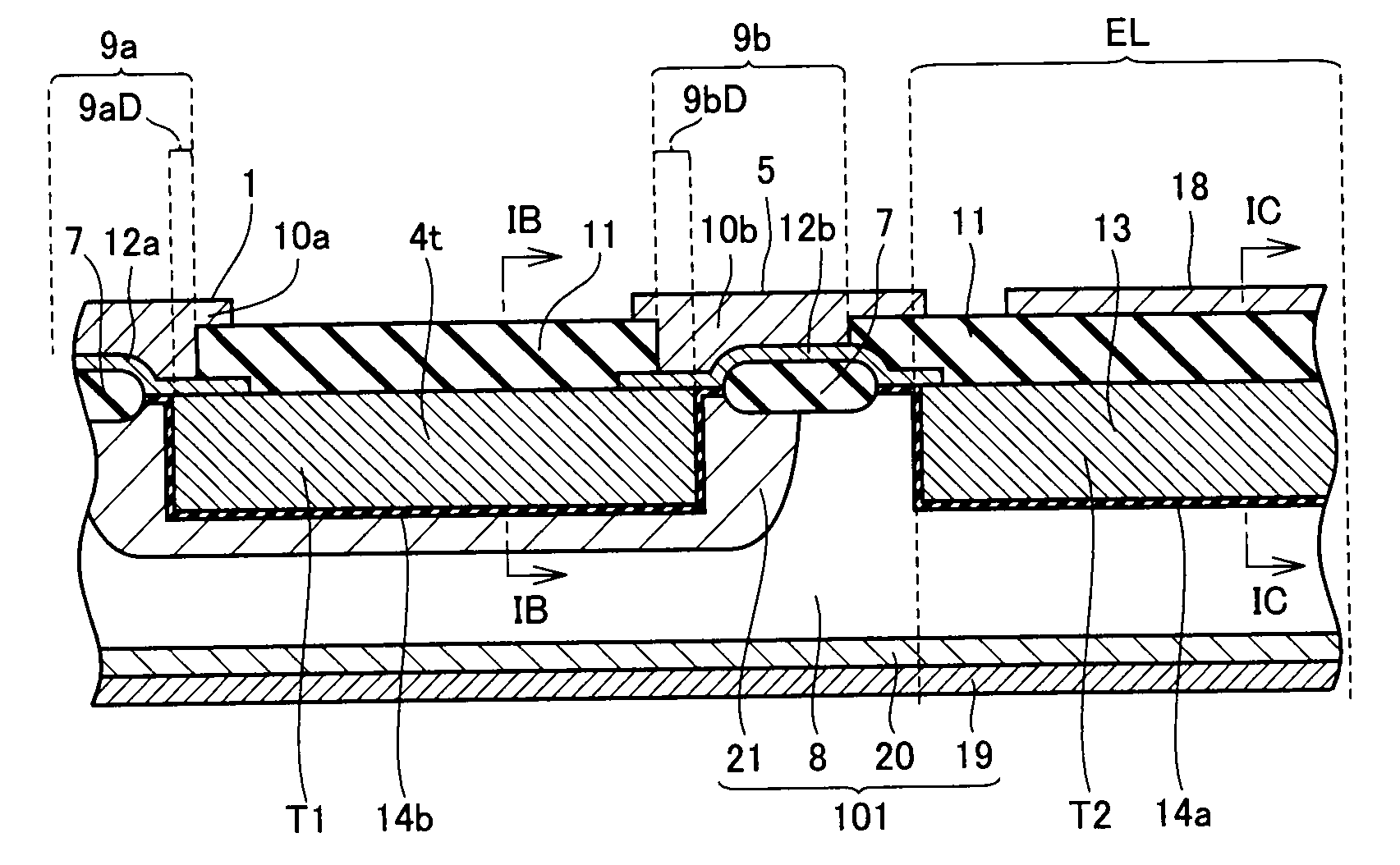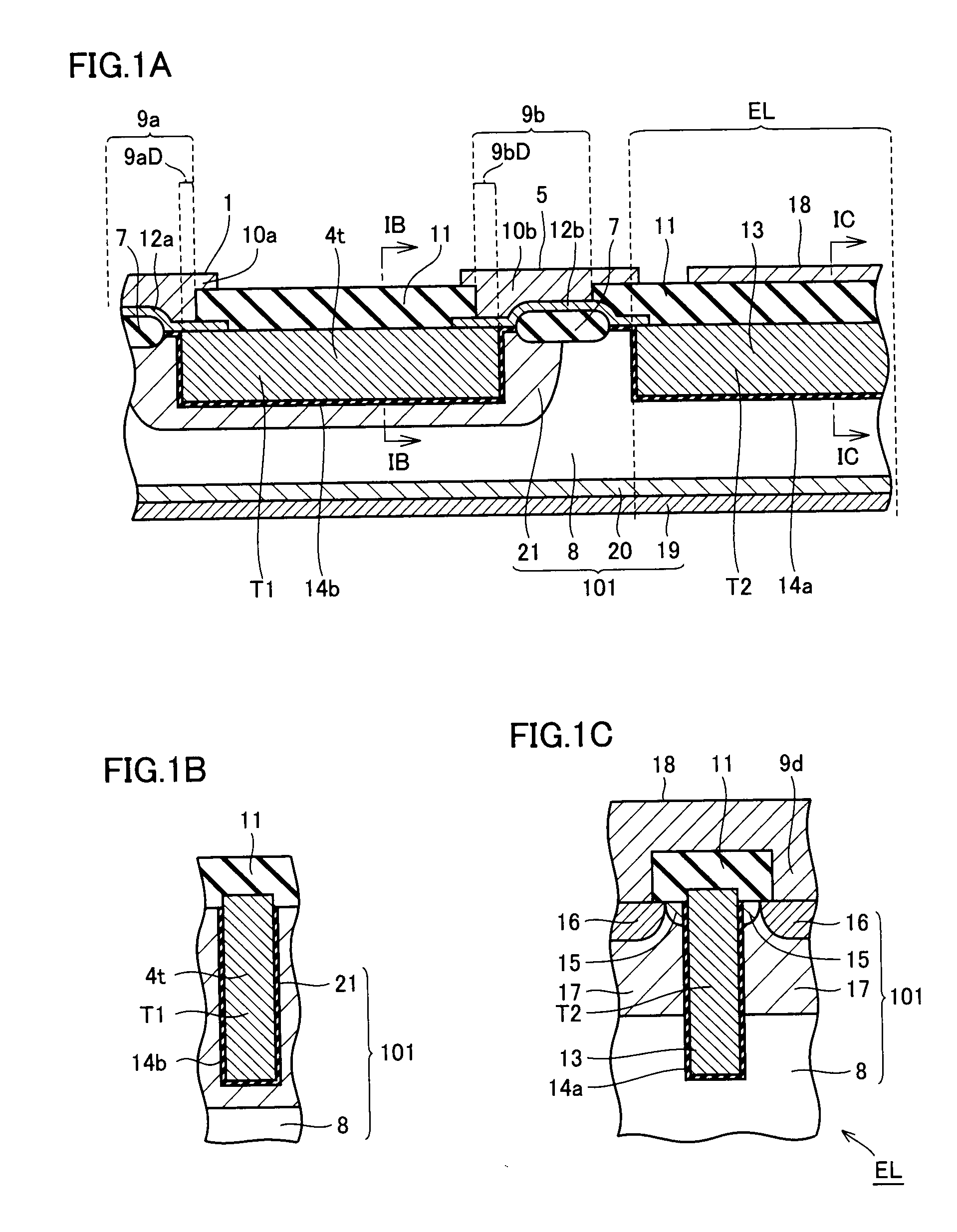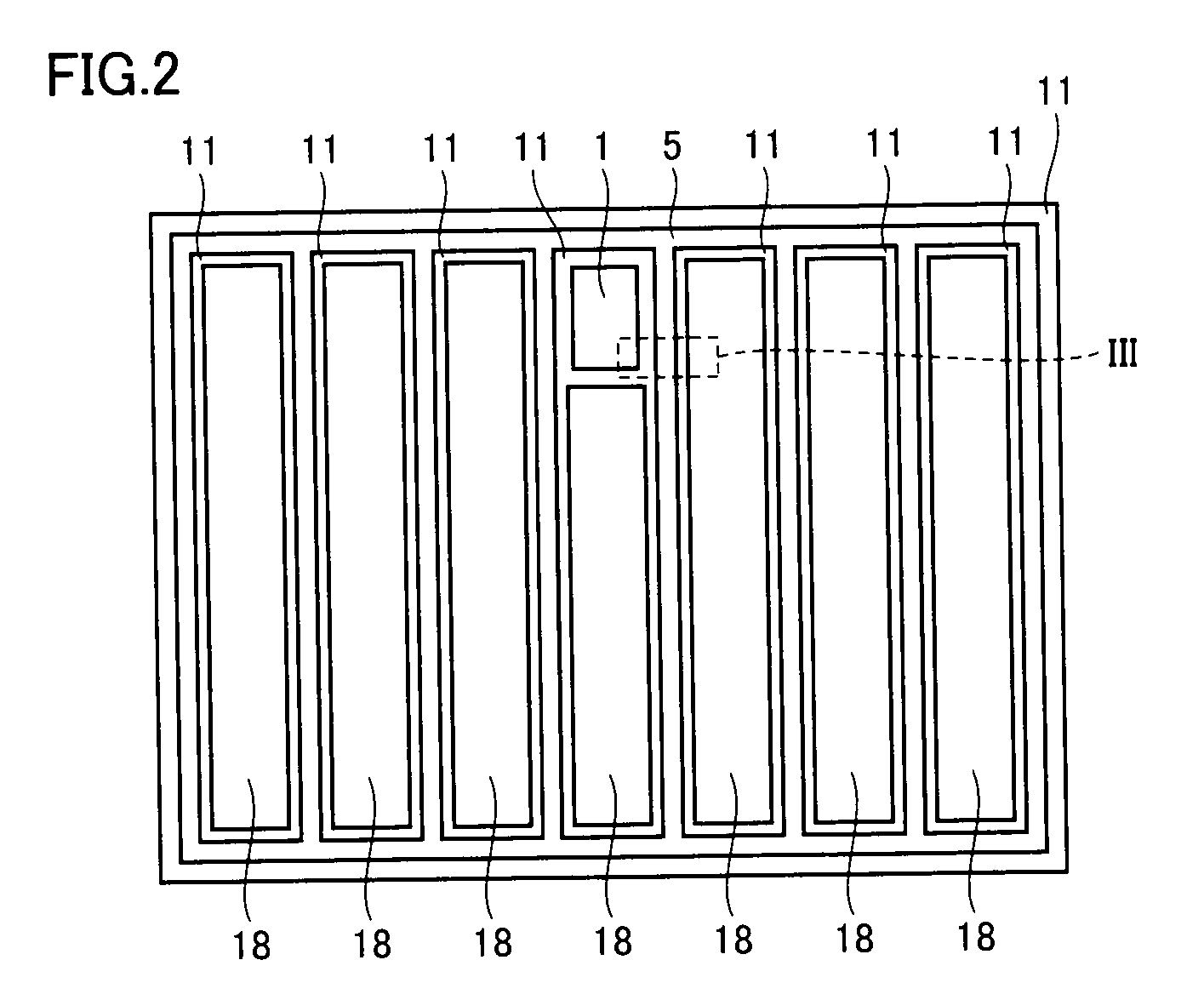Semiconductor device
a semiconductor and device technology, applied in semiconductor devices, diodes, electrical devices, etc., can solve the problems of increasing the number of parts, the potential connection between the gate resistance and the semiconductor chip is liable to change, and the semiconductor device is liable to malfunction or oscillate, etc., to achieve high reliability, small footprint, and large current
- Summary
- Abstract
- Description
- Claims
- Application Information
AI Technical Summary
Benefits of technology
Problems solved by technology
Method used
Image
Examples
first embodiment
[0082]First, a schematic structure of a semiconductor device of a first embodiment will be described.
[0083]Referring to FIGS. 1A-1C, an IGBT chip of this embodiment is a power semiconductor device, and has an IGBT element EL that is a trench gate type semiconductor element, and a trench type internal gate resistance 4t that is a resistance element.
[0084]Referring to FIGS. 1A and 1B, trench type internal gate resistance 4t is formed in a first trench T1 formed at a semiconductor substrate 101 with an insulating film 14b therebetween. Thereby, trench type internal gate resistance 4t is configured such that a sectional area of its current path increases with increase in depth of first trench T1.
[0085]Referring to FIGS. 1A and 1C, IGBT element EL has a channel region formed of a part of semiconductor substrate 101. IGBT element EL has a large number of gate electrodes 13 for controlling the channel region. Gate electrodes 13 are, e.g., hundreds to tens of thousands in number.
[0086]Refer...
second embodiment
[0146]First, a structure of a IGBT chip that is a semiconductor device of a second embodiment will be described.
[0147]Referring to FIGS. 21-24, the IGBT chip of this embodiment has a metal portion 22. Metal portion 22 includes metal portions 22b1 and 22b2 arranged inside first trench T1, and a metal portion 22a arranged inside second trench T2. A material of metal portion 22 has a lower resistivity than a semiconductor material such as heavily doped n-type polycrystalline silicon. The material of metal portion 22 is, e.g., high-melting point metal such as tungsten, titanium, platinum or copper.
[0148]Referring to FIG. 24, gate electrode 13 has a polycrystalline silicon layer 12g, and metal portion 22a filling a space inside polycrystalline silicon layer 12g.
[0149]Referring to FIGS. 22 and 23, trench type internal gate resistance 4t has buried metal portion 22b1 in a portion opposed to gate pad side contact hole 9aD. Also, trench type internal gate resistance 4t has buried metal port...
third embodiment
[0190]First, a structure of an IGBT chip that is a semiconductor device of a third embodiment will be described.
[0191]Referring to FIG. 39, trench type internal gate resistance 4t that is a resistance element of the semiconductor device of this embodiment includes, as a major element, an n-type lightly doped polycrystalline silicon layer 23a. Trench type internal gate resistance 4t has an n-type heavily doped polycrystalline silicon layer 24a located in portions that are in contact with gate pad side contact hole 9a and main interconnection side contact hole 9b.
[0192]The semiconductor device of this embodiment differs from those of the first and second embodiments in that a major portion of the buried substance of trench type internal gate resistance 4t is the polycrystalline silicon layers of a lower concentration than those in the first and second embodiments, and the potential difference between trench type internal gate resistance 4t and p-type region 21 in contact with it can ...
PUM
 Login to View More
Login to View More Abstract
Description
Claims
Application Information
 Login to View More
Login to View More - R&D
- Intellectual Property
- Life Sciences
- Materials
- Tech Scout
- Unparalleled Data Quality
- Higher Quality Content
- 60% Fewer Hallucinations
Browse by: Latest US Patents, China's latest patents, Technical Efficacy Thesaurus, Application Domain, Technology Topic, Popular Technical Reports.
© 2025 PatSnap. All rights reserved.Legal|Privacy policy|Modern Slavery Act Transparency Statement|Sitemap|About US| Contact US: help@patsnap.com



